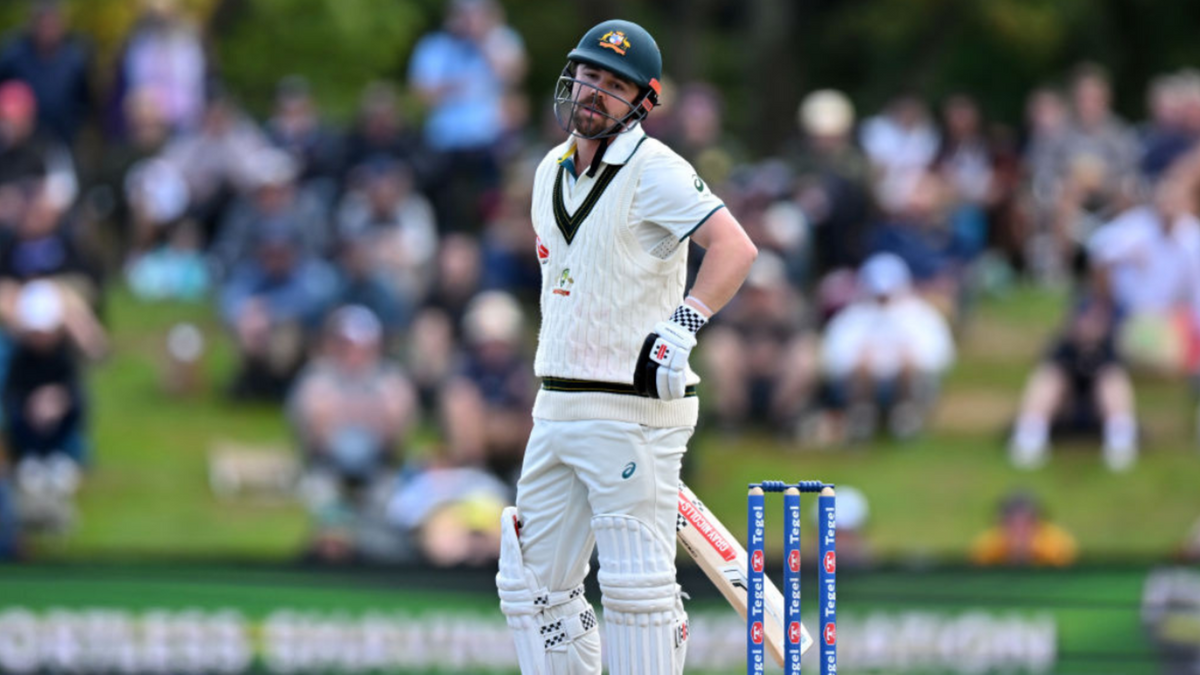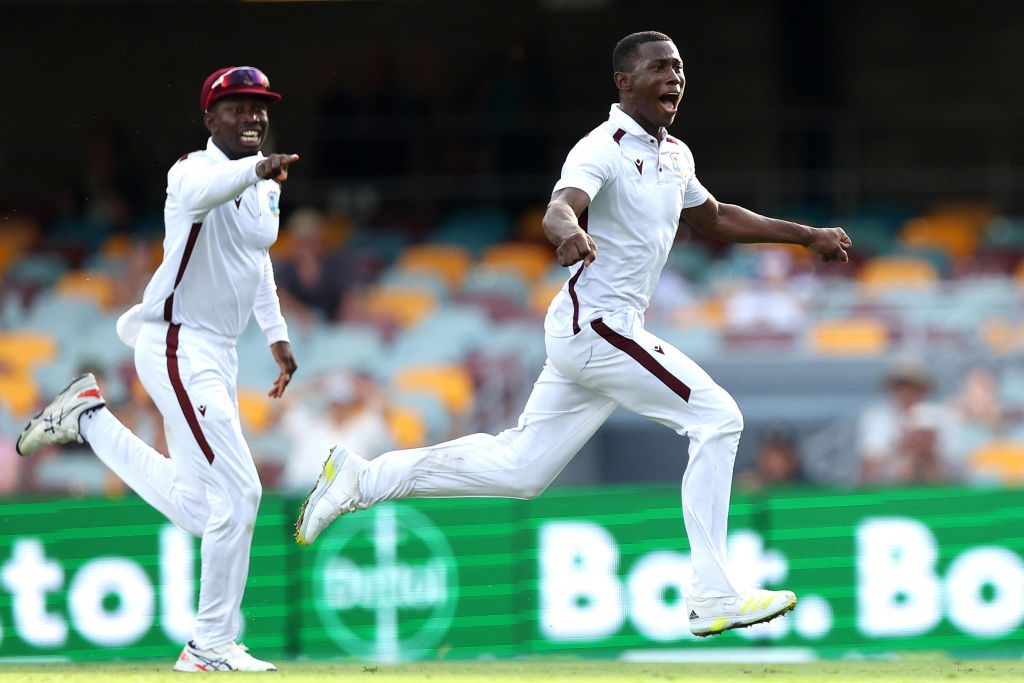
Australia might be winning Test matches both home and away, but beneath the exterior of favourable results lies an aging team that might be losing its edge, writes Naman Agarwal.
Subscribe to the Wisden Cricket YouTube channel for post-match analysis, player interviews, and much more.
Australia hold the World Test Championship title. They are second on the points table of the current edition. And they pulled off a recent thrilling run-chase in Christchurch where Pat Cummins and Alex Carey, the protagonists of the victory, were hailed for their ruthlessness in not caring about personal milestones and getting the job done – characteristics that have defined Australian cricket over the years.
They have a bowling quartet that shares nearly 1,500 Test wickets amongst them, arguably the best Test opener in the 21st century, and a freak of nature named Steve Smith, among others.
On paper, things might look fine. Better than that, even. Looks, however, often flatter to deceive.
A closer inspection of the fine print reveals cracks which have started to peek through in the last year or so. Cracks, which are now at the risk of being exposed and exploited.
A gradual decline in dominance
Cummins took charge of Australia after they lost their fortress at the hands of Rishabh Pant, Mohammed Siraj, T Natarajan & co. in early 2021. His first assignment was to restore the monotonicity of home Tests. Australia bat big, their quicks get the visiting batters jumping around, Nathan Lyon spins a web of top-spin, and despite their best efforts, teams lose games by humongous margins.
Between December 2021 and January 2023, Australia played ten home Tests, lost none, and won eight. Two of those were innings victories, four by margins of more than 140 runs, and two by six or more wickets.
This home summer, however, Australia’s victory margins in the four games which they won read: 360 runs, 79 runs, eight wickets, and ten wickets. One relatively close game. Fair enough, you’d say. But it also involved a second breach of the Gabba in three years, this time at the hands of Shamar Joseph, and some of the other games were closer than they appear.
 Shamar Joseph picked 7-68 in the second innings in Brisbane to take West Indies to an eight-run victory. (Photo by PAT HOELSCHER/AFP via Getty Images)
Shamar Joseph picked 7-68 in the second innings in Brisbane to take West Indies to an eight-run victory. (Photo by PAT HOELSCHER/AFP via Getty Images)
Pakistan, who have historically been trounced in Tests in Australia, came without their best fast bowler and spinner – due to injuries – and arguably their most suitable bowler for the conditions – due to workload management. They should have been trounced again. But they weren’t.
Pakistan reached 250 at least once in every Test, making it the first time that they crossed the mark at least three times in an Australian tour this century. In the second Test in Melbourne, they were in with a real chance at 219-5 chasing 317 before each of their last four batters made ducks. In Sydney, an inspired counter-attack by Aamer Jamal followed by a six-wicket haul in just his third Test gave Pakistan a first-innings lead of 14 before they collapsed in the second.
Australia managed to win all three games. But they had to fight. They had to scrape. At home. Before they eventually lost to the West Indies. A team which they had not lost at home to since 1997 and showed up with seven uncapped cricketers.
Even against New Zealand, with the kind of dominance they have historically asserted on them, Australia shouldn’t even have been pushed, let alone be favourites to lose a game. The first Test in Wellington was won by 172 runs, but even that included a second-innings collapse where they were bowled out for 164 giving New Zealand a sniff.
Where is it going wrong for Australia?
Cut off the head of the snake, and the body will follow.
Australia’s head of the snake, heads rather, have been Marnus Labuschagne and Smith, their two most prolific scorers. Since 2019, the year when Labuschagne stood back up and looked Jofra Archer in the eye immediately after getting knocked down by a searing bouncer, these two have scored 4,033 and 3,486 runs respectively. No other Australian batter has scored more than 3,000.
Between 2019 and the start of 2023, they were averaging 62.29 and 58.60. Since 2023, however, those numbers have dropped down to 33.64 and 39.37 respectively.
At home, Labuschagne averaged 70 until the start of 2023, crossing 50 every 2.1 innings. The numbers were supreme even without the home filter – an average of 59.05 and a fifty every 2.39 innings. Since last year, however, he has only scored seven half-centuries and a hundred in 35 knocks, crossing 50 once every 4.37 innings.
Marnus Labuschagne has endured a lean run with the bat in Tests since the start of 2023 📉#NZvAUS pic.twitter.com/Cm3UCE0AAb
— Wisden (@WisdenCricket) March 1, 2024
Smith made the bold decision to move up the top of the order after David Warner’s retirement. Four Tests in, the gamble hasn’t paid off yet. As an opener, he currently averages 28.5 which includes an unbeaten 91 and five dismissals under 15.
Travis Head, who won Australia two world titles last year, and has been their middle-order hulk who takes games away from oppositions before they can realise, seems to have regressed following the 2023 World Cup. His last seven Tests have brought 269 runs at 22.41 with just one hundred and no fifties.
The same can be said of Usman Khawaja, the opener with the highest Test average in the 21st century. After a stellar Ashes last year, Khawaja has managed to score at a below-par average of 34.38 with just two fifties from his last seven Tests.
Cameron Green has the most runs for Australia in Tests this year and is the only one to average above 50, but more than half of his runs came in one outing which included a century partnership for the tenth wicket. Apart from that, he has looked vulnerable against the moving ball.
Whether it has to do with age – three of the four senior players out of form are over thirty – or a lack of foresight by the board leading to not having enough quality backups, this is a silent but perfect storm brewing for Australia.
They are currently being carried by their famed bowling quartet and Mitchell Marsh. Mitchell Starc, Josh Hazlewood, and Lyon are all past 33. Australia’s next Test assignment is a five-match home series against India next summer, a team they have not beaten in a Test series since 2014/15. At some point, the quartet might have to break off, leaving them with both – a vulnerable batting lineup and a vulnerable bowling attack.
That is a spot Australia have not found themselves in often in their own backyard. And with no Test cricket to play between then and now, they can’t do much other than hope for things to change for the better, for right now, they seem to be heading for the worse.








